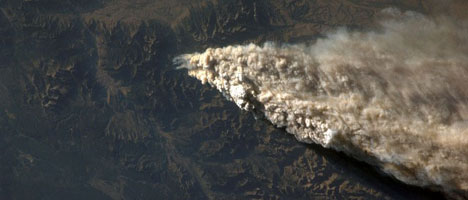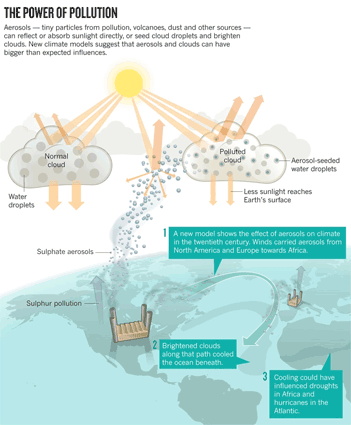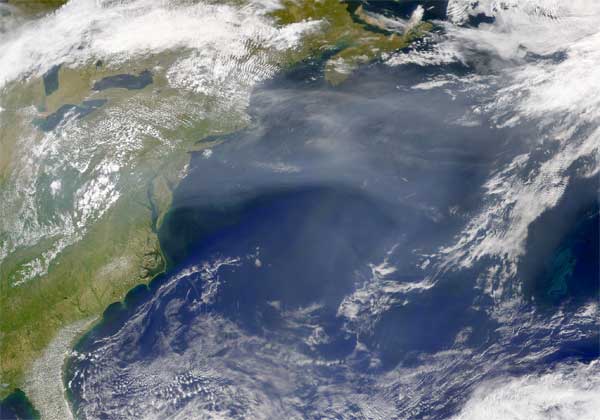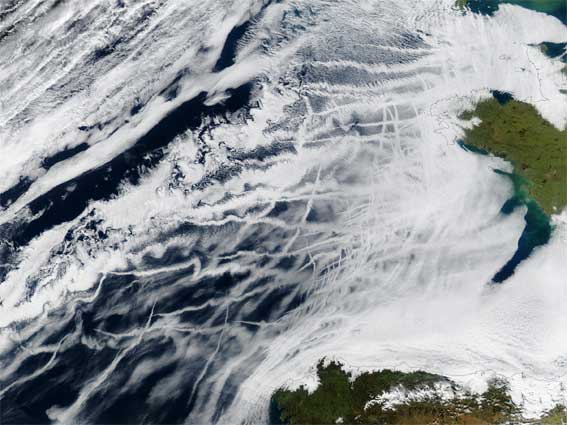Aerosols and Climate
Aerosols refer to fine solid or liquid particles suspended in the atmosphere, where they reside typically for days to weeks before falling to the ground or being washed out by rain or snow. They arise both from human activities involving burning of fossil fuels, biofuels and veg and from natural sources (such as desert dust, sea spray and volcanic eruptions). Aerosol particles are tiny, but numerous, and often comprise of a number of inorganic and organic substances. Visible forms of atmospheric aerosol plumes include smoke, smog, haze and dust.
How do aerosols affect climate?
Aerosols can influence the Earth’s climate in two ways. When the sky is clear (devoid of clouds), aerosols can reflect incoming sunlight back to outer space – the direct effect. This blocks part of the energy that would have reached the surface, thus having a cool effect on the climate. Absorbing aerosols, black carbon in particular, can trap solar energy within the atmosphere. Although absorption, like reflection, tends to reduce sunlight at the ground level, the enhanced atmospheric heating eventually warms up the surface, and counteracts the cooling caused by reflection.
As illustrated vividly by “ship tracks”, cloud reflectance or albedo goes up with the number of aerosol particles that provide nucleating sites for forming cloud droplets. The resulting brightening of clouds renders them more potent at shielding the surface from sunlight, causing the first indirect effect (or cloud albedo effect). More aerosols may also enable clouds to last longer by suppressing rainfall – the second indirect effect (or cloud lifetime effect).
Despite many years of active research, aerosols are still the least certain of all known climate forcings. This seriously hinders our ability to separate the roles of aerosols and greenhouse gases in driving the past climate change, thereby precluding one from reliably projecting the future climate.
GFDL Research
Scientists at GFDL tackle the problem, by creatively bridging the several-orders-of-magnitude gaps in temporal and spatial scales between aerosol/cloud microphysics and climate models, We design and implement first principles-based parameterizations of the microphysical processes central to simulating the aerosol-cloud-radiation interactions (e.g., cloud droplet activation and meteorological evolution, internal mixing of absorbing and non-absorbing aerosol species, and hygroscopic growth of water-soluble aerosols) in order to improve their model representation. The enhanced model physics allows one to simulate the climate impacts of aerosols and clouds with unprecedented realism.
A schematic of the climate effects of aerosols (Copyright © 2012, Rights Managed by Nature Publishing Group)
Research Highlights
- A Mechanistic Sea Spray Generation Function Based on the Sea State and the Physics of Bubble Bursting
- Reduction in Near-Surface Wind Speeds With Increasing CO2 May Worsen Winter Air Quality in the Indo-Gangetic Plain
- Substantial global influence of anthropogenic aerosols on tropical cyclones over the past 40 years
- Assessing the influence of COVID-19 on Earth’s radiative balance








